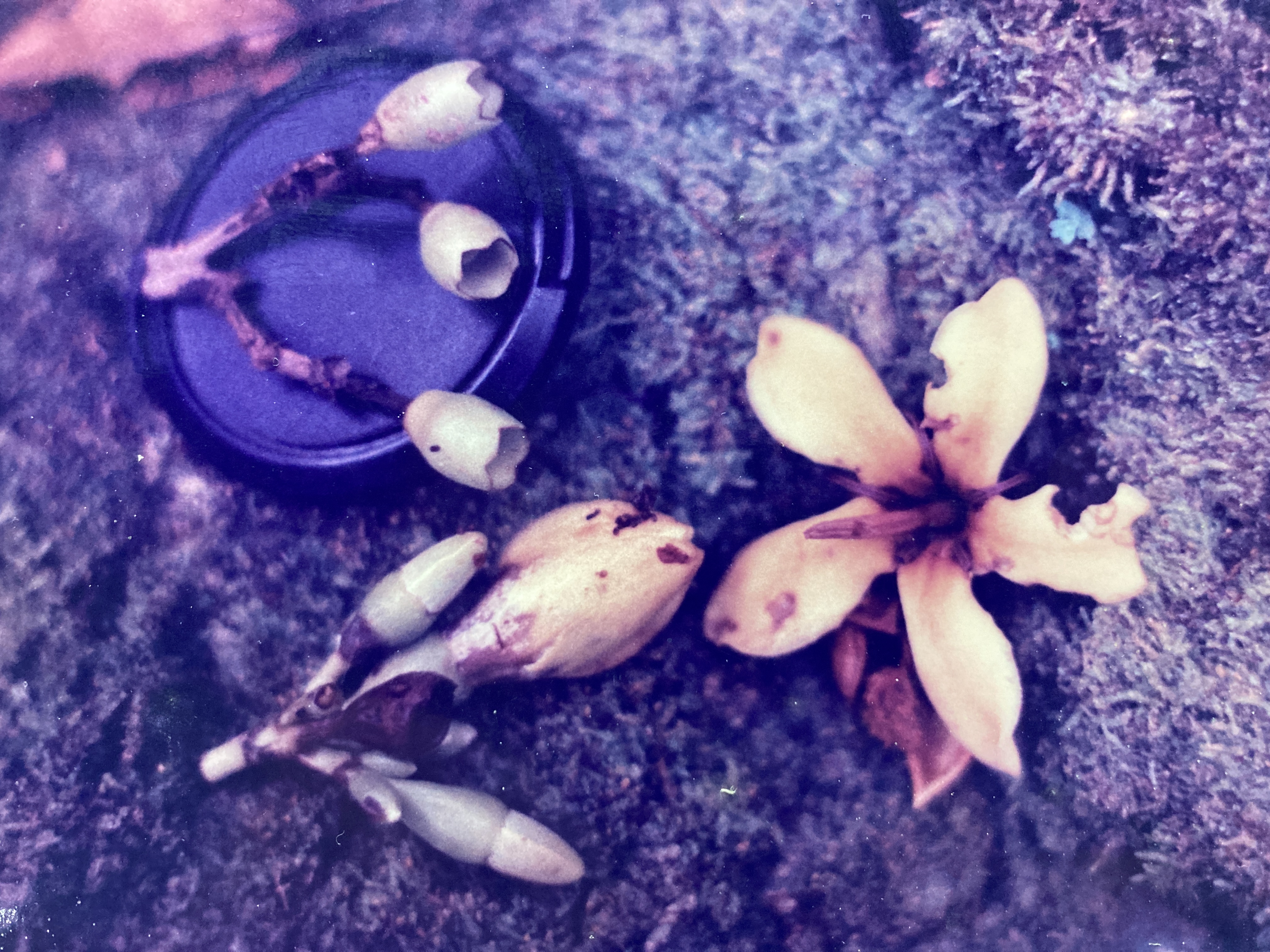Genipa americana L.
Rubiaceae
GUAITIL
Occasional evergreen subcanopy tree (15-20 m) found growing widely – though thinly – dispersed in a variety of different habitats. Known to indigenous peoples of the region, Guaitil produces large, green fruits that were used as a source of a skin-tinting, purple dye. Large, leathery yellow flowers, found most frequently on the forest floor underneath male trees, are also a hallmark of this species.
Description: Guaitil has a straight, very cylindrical, buttressless trunk that reaches a relatively stout 50 cm in diameter (and is second only to Chimarrhris latifolia in size among Manuel Antonio National Park’s Rubiaceaes). Clad in smooth, pale gray bark, the bole bears horizontal branches that are concentrated along the upper third of its length. There, they form a regular, pyramidal crown of only moderate thickness. Leaves are simple and opposite, though they may appear to be arranged in whorls due to their tendency to cluster at the ends of branches. The nearly sessile, smooth, and elongate blades (25 cm by 7 cm) are elliptical or spatulate (with their widest point shifted distally from center). Pronounced drip tips are present. Guaitil trees are deciduous, shedding foliage and remaining bare for a brief, two-week period during the mid-dry season month of February. A fresh, green canopy of translucent leaves is usually in place by March.

Guaitil flowers are imperfect, with male and female blossoms borne on separate trees (the species is dioecious) in small terminal panicles. Both types of flowers are large (4 cm in diamhttps://treesofcostaricaspacificslope.files.wordpress.com/2023/07/img_1079.jpgeter) and similar in form. Composed mainly of a thick, leathery tube that divides and flares into 5 fleshy, yellow petals, the corolla is supported by a cup-shaped, green calyx. The five brown stamens of male flowers are replaced by a thick and long, central pistil in female blossoms. A mild, lemon scent is emitted by the blooms and is detectable at close range. Male trees are the more prolific of the two sexes, flowering annually over an extended but precisely timed period, lasting from late February through June.
Fruits (12 cm by 6 cm) are large, football shaped berries. Many of them can be seen hanging vertically from short, stiff pedestals in female crowns, though usually only numbering one to a branch tip. In each, a coating of smooth, gray-green skin covers a thin layer of flesh and an inner core containing four tiers of tightly-packed, flat, incisor-like seeds radially arranged about the berry’s longitudinal axis. All of the interior portions of the fruit contain a clear liquid that turns blue-black or purple within two hours of exposure to the air – as does any part of the skin that has come into contact with it. Fruits are persistent on the trees, slowly maturing and falling from the crown all year long. Seeds germinate within a couple of weeks of coming into contact with moist soil.
Similar Species: The omnipresent fruits on female Guaitil trees make these unmistakable. When sterile, male trees may be recognized by their large, elongate, distinctively-shaped leaves – other similarly-sized members of the Rubiaceae and Myrtaceae families have shorter, more rounded blades.
Natural History: Flowers are pollinated by bees and hummingbirds (Croat, 1978). Fruits appear to be eaten mainly by white-faced monkeys and scavenging, terrestrial mammals (guatusas, tepesquintles, raccoons, coatis, etc.).
Uses: Guaitil fruit juices have historical importance as a source of purple or bluish dye. Persistent and durable, this coloring can be very difficult to remove when it has come into contact with the skin. In South America, indigenous people mix the grated fruit with ash to produce a popular, blue dye (Plotkin, 1993). Allen (1956) reports that a tree of the same genus (probably this one) has hard, strong wood suitable for tool handles, door frames, and interior construction.
Distribution: In MANP, Guaitil is found in Punta Catedral and Puerto Escondido, growing solitarily amid primary growth. In Costa Rica, this species is reported from the entire pacific coast, though the trees that I have seen in other areas (Santa Rosa and Corcovado) seem different in that they orient their fruits in an upright vertical position from the ends of the branches. Guaitil ranges from Mexico and the West Indies to Argentina.



